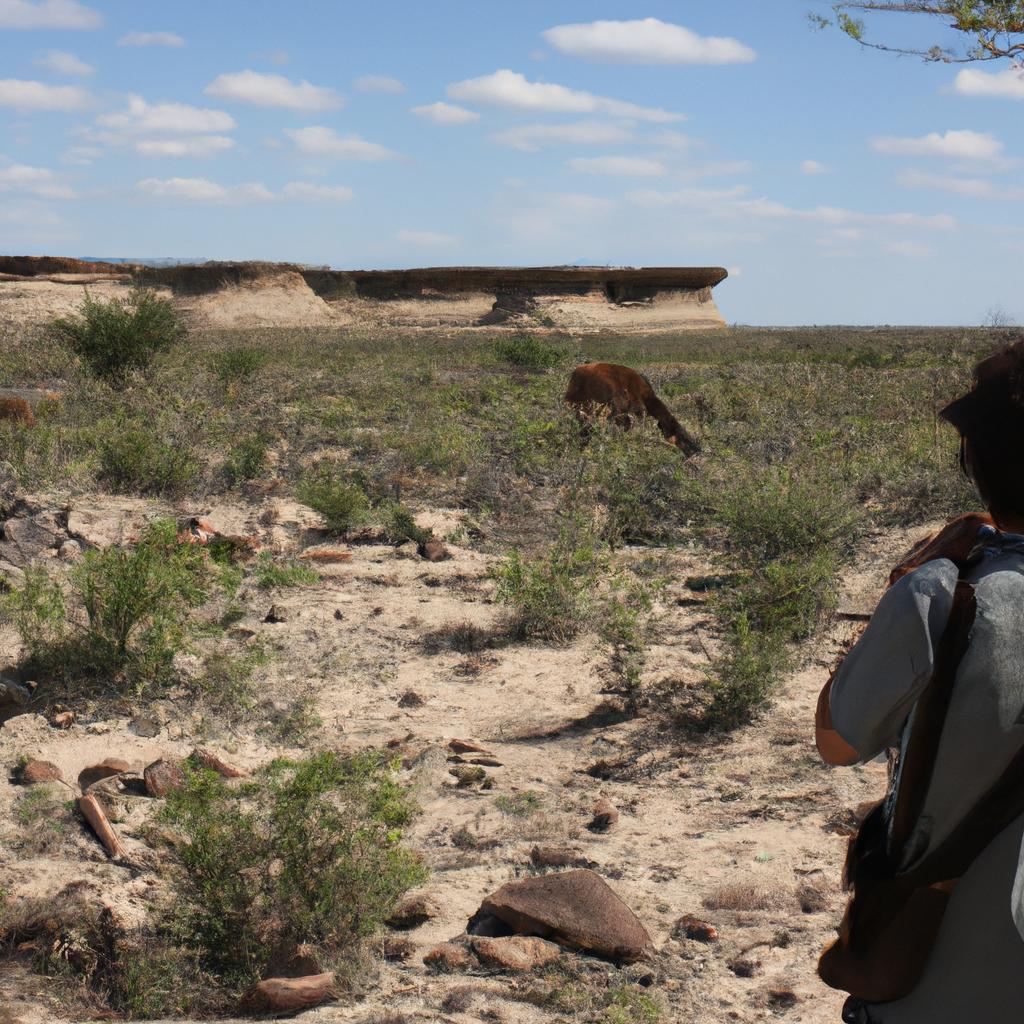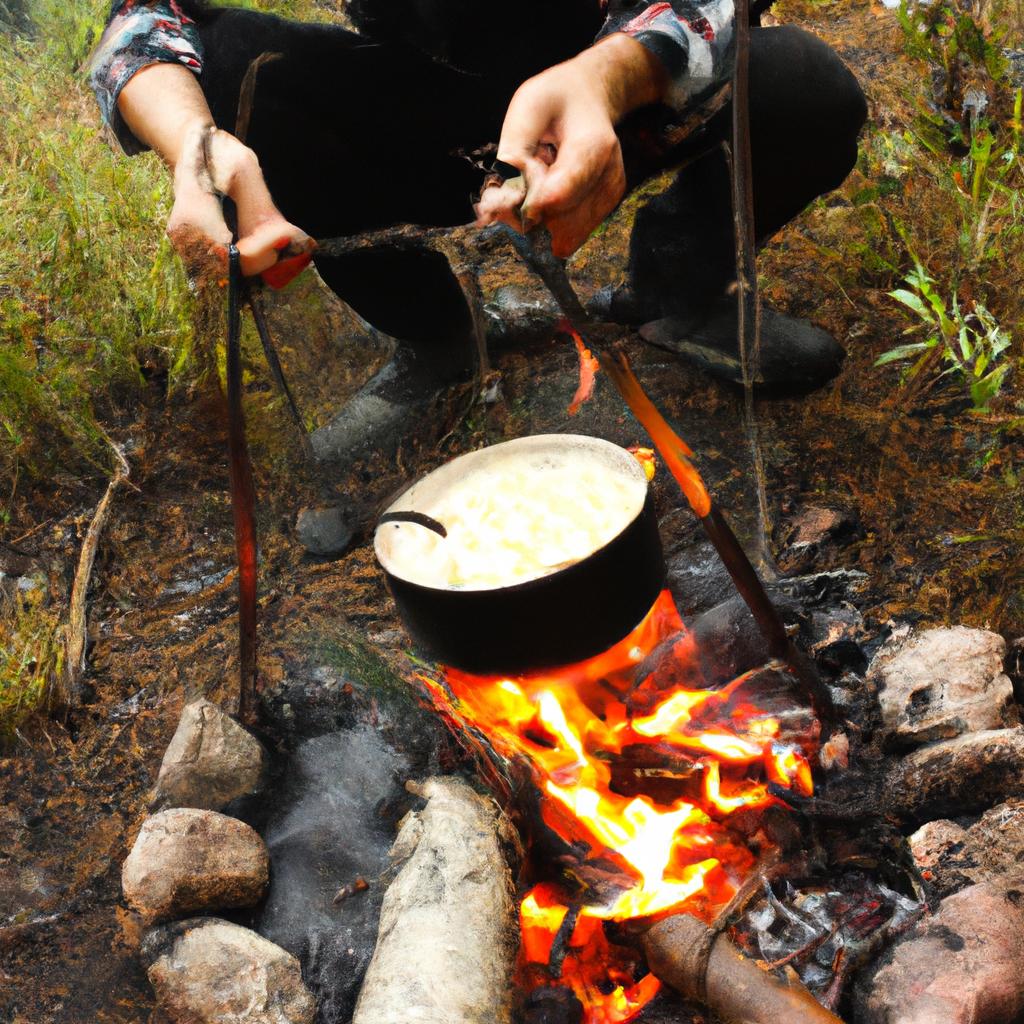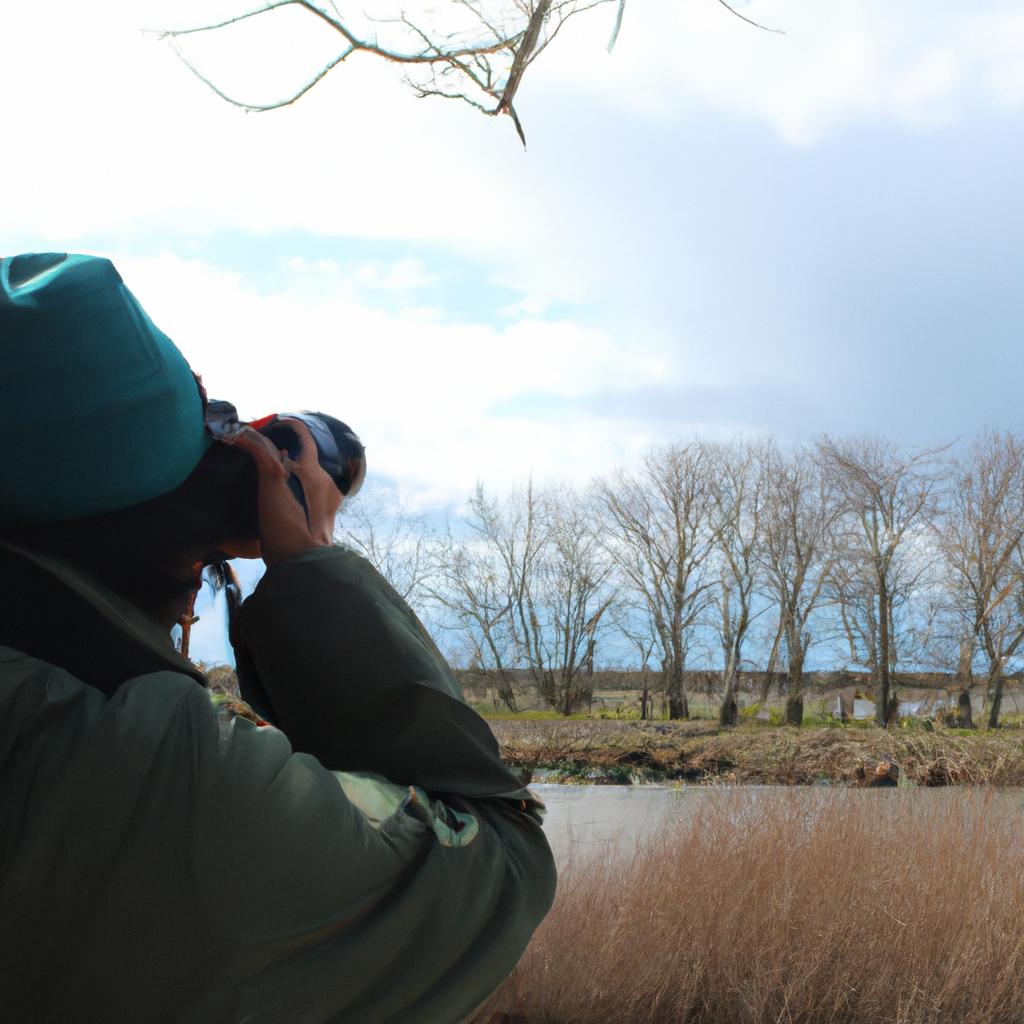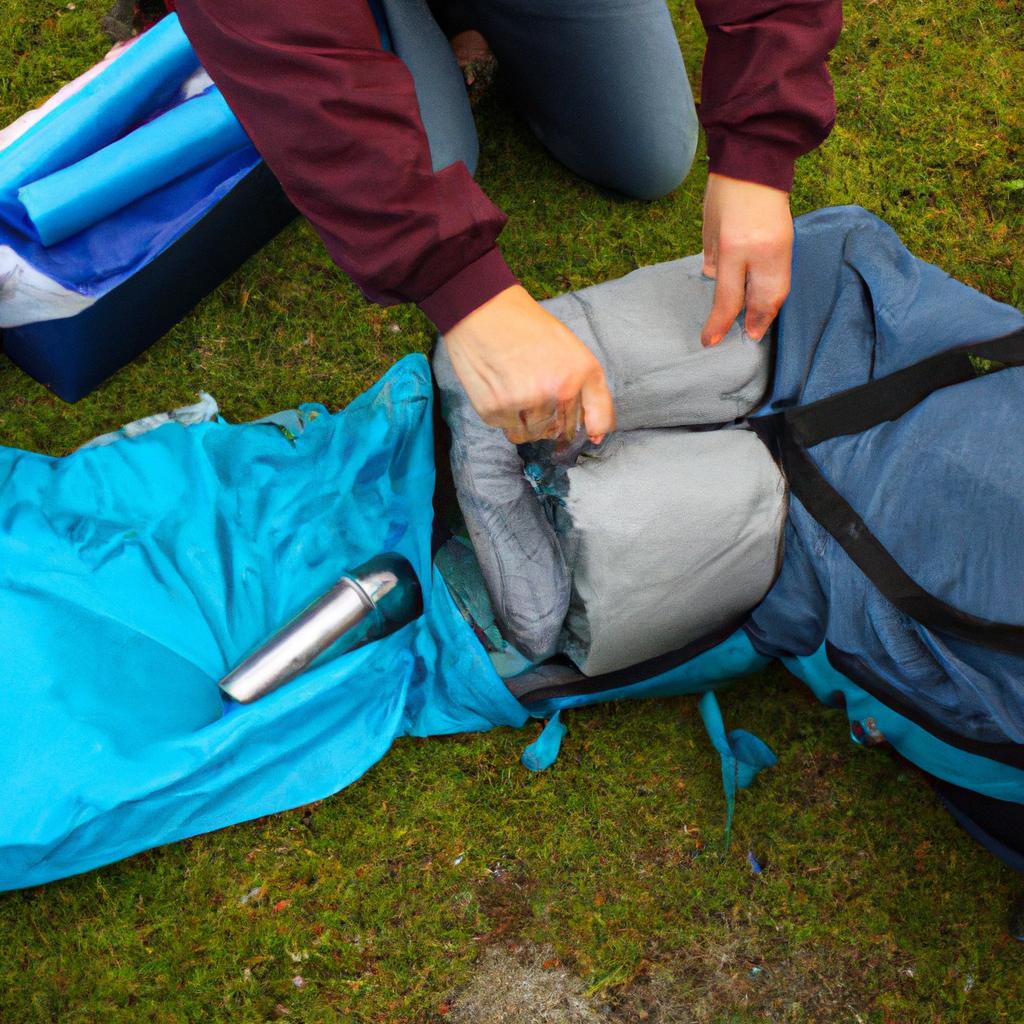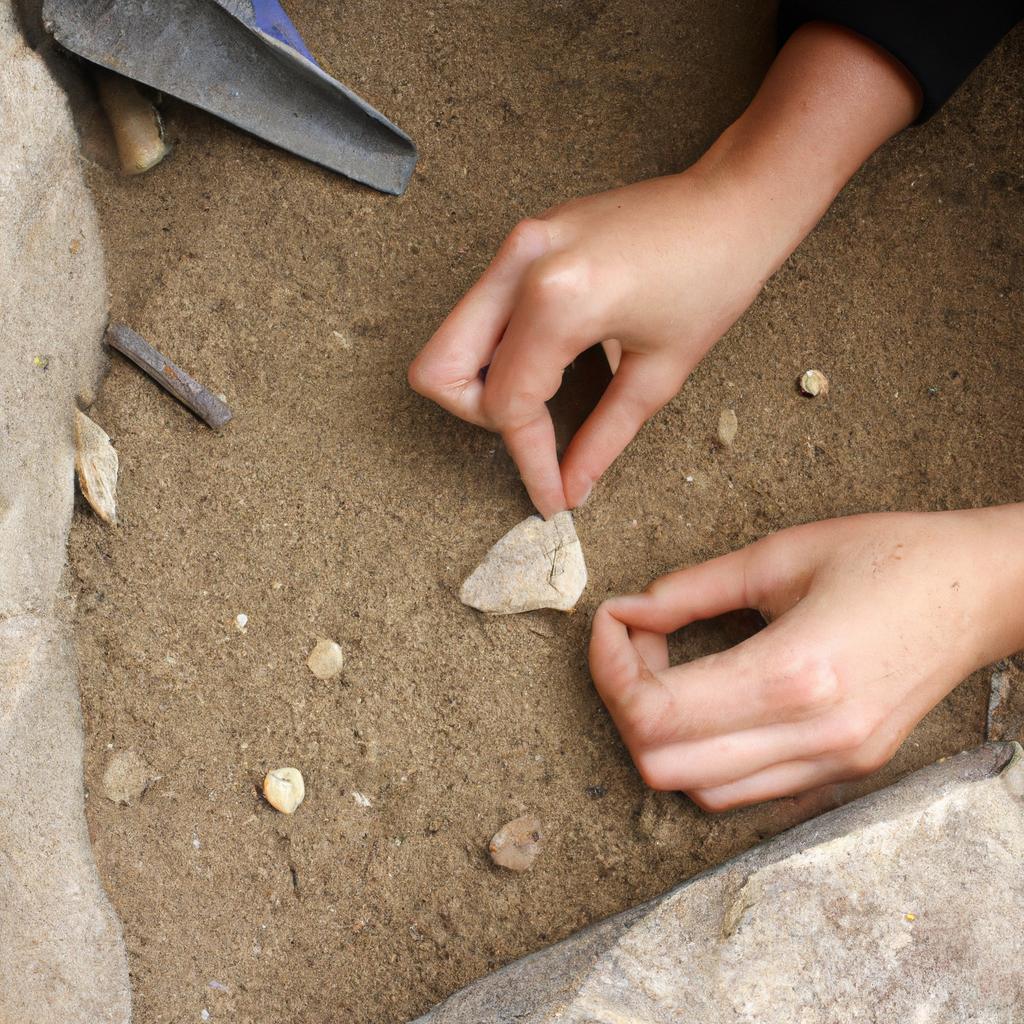Hiking trails offer a unique opportunity to explore and immerse oneself in the natural beauty of various landscapes. Chaco Canyon, located in northwestern New Mexico, offers an array of hiking trails that not only allow visitors to experience its stunning vistas but also provide access to ancient ruins and historical sites. This travel guide aims to serve as a comprehensive resource for those interested in camping and exploring the hiking trails within Chaco Canyon.
For instance, imagine standing at the edge of Pueblo Bonito, one of the largest and most iconic ancestral Puebloan dwellings in North America. As you gaze upon its intricate architecture and ponder its significance, you can’t help but feel a deep sense of awe and curiosity about the people who once inhabited this place. The hiking trails surrounding Pueblo Bonito present an opportunity for hikers to further delve into Chaco’s rich history while enjoying the serenity of nature.
This article will provide detailed information on several popular hiking trails within Chaco Canyon, including their difficulty levels, notable features along each trail, and recommended camping spots nearby. By equipping readers with valuable insights and practical tips regarding these trails, this guide seeks to enhance their overall experience by ensuring they have all the necessary knowledge to make informed decisions during their visit and make the most of their time in Chaco Canyon.
-
Pueblo Alto Loop Trail: This moderate-level trail takes hikers on a 5-mile loop with breathtaking views of the canyon and access to several ancient ruins, including Pueblo Alto and New Alto. The trail also offers interpretive signs that provide historical context, making it an excellent choice for those interested in learning more about the ancestral Puebloan culture.
-
South Mesa Trail: For experienced hikers looking for a more challenging adventure, the South Mesa Trail is a 9-mile round trip that rewards travelers with panoramic views of Chaco Canyon. Along the way, hikers will encounter the famous Supernova pictograph panel and can explore various side trails leading to additional ruins.
-
Wijiji Trail: Perfect for families or beginner hikers, the Wijiji Trail is a short 1-mile out-and-back path that leads to Wijiji Pueblo. This well-preserved ruin provides a glimpse into ancient life at Chaco Canyon and allows visitors to appreciate the architectural ingenuity of the ancestral Puebloans.
-
Penasco Blanco Trail: If you’re up for a longer trek, consider hiking the Penasco Blanco Trail, which covers approximately 7 miles round trip. This trail offers stunning views of Fajada Butte and passes by Penasco Blanco Ruin, one of Chaco’s largest Great Houses.
When planning your camping experience near Chaco Canyon, there are two main options available: Gallo Campground and Cottonwood Campground. Both campgrounds offer basic facilities such as restrooms and water, but reservations are strongly recommended during peak seasons.
Gallo Campground is located within Chaco Culture National Historical Park and provides easy access to many hiking trails, including those mentioned above. It features both tent-only sites and RV sites with electric hookups.
Cottonwood Campground is situated just outside the park boundary but still offers convenient access to Chaco Canyon. It is a more rustic option, with tent-only sites and no hookups available. However, its proximity to the canyon makes it an attractive choice for those seeking a closer connection with nature.
Remember to pack essential camping gear, including a sturdy tent, sleeping bags, cooking equipment, and sufficient food and water supplies. Additionally, be mindful of Leave No Trace principles and respect the fragile environment by properly disposing of waste and minimizing your impact on the natural surroundings.
By following this travel guide’s recommendations and preparing adequately for your trip to Chaco Canyon’s hiking trails, you can embark on an unforgettable adventure filled with ancient history, breathtaking scenery, and moments of tranquility in nature.
Exploring the Ancient Puebloan Ruins
Imagine standing amidst awe-inspiring ancient ruins, witnessing the remnants of a civilization long gone. One such captivating destination is Chaco Canyon, where visitors have the opportunity to explore the remarkable Ancient Puebloan ruins. Through careful examination and preservation efforts, these ruins provide valuable insights into the lives and culture of ancestral Native American communities.
To truly appreciate these archaeological wonders, one must understand their historical significance. The Ancient Puebloans inhabited Chaco Canyon over a thousand years ago, constructing intricate multi-story buildings that still captivate modern-day explorers. These structures were not only homes but also served as centers for trade and ceremonial activities. By examining the architectural features and artifacts found within these ruins, researchers gain invaluable knowledge about ancient societies’ social organization and religious practices.
Delving deeper into this exploration allows us to uncover fascinating aspects of Ancient Puebloan life. For instance, evidence suggests that Chaco Canyon was an integral part of a vast regional network encompassing hundreds of miles. Its strategic location facilitated extensive trade routes connecting different communities across the Southwest United States. Furthermore, intriguing astronomical alignments discovered in some structures indicate how deeply intertwined celestial observations were with religious rituals.
Understanding Chaco Canyon’s rich history involves acknowledging its cultural importance from multiple perspectives:
- Environmental Harmony: The Ancestral Puebloans skillfully adapted to their arid surroundings by employing sophisticated water management techniques.
- Artistic Expressions: Petroglyphs etched onto rock surfaces depict vibrant representations of animals, symbols, and abstract designs.
- Intricate Ceramics: Pottery fragments unearthed at various sites showcase exquisite craftsmanship and unique decorative styles.
- Complex Societies: Archaeological evidence reveals complex societal hierarchies characterized by distinct roles and responsibilities among community members.
This table illustrates key elements found within the ancient puebloan ruins:
| Key Elements | Description |
|---|---|
| Kivas | Circular underground chambers used for religious ceremonies and communal gatherings. |
| Great Houses | Massive multi-story structures that served as centers of commerce, administration, and ritual activities. |
| Chaco Roads | Extensive road systems connecting the various sites within the canyon and beyond. |
| Macaw Feathers | Valuable trade items believed to have been imported from tropical regions, indicating long-distance connections. |
As we immerse ourselves in the exploration of Ancient Puebloan ruins at Chaco Canyon, it becomes evident how these archaeological treasures offer a glimpse into a rich and complex civilization that flourished centuries ago.
Transitioning seamlessly into our next adventure, let us now embark on an equally captivating journey – discovering the Petroglyphs and Rock Art found throughout this ancient landscape.
Discovering the Petroglyphs and Rock Art
As we continue our journey through Chaco Canyon, a remarkable destination with its rich history and natural beauty, let us delve into the fascinating world of the ancient Puebloan ruins. To illustrate their significance, consider the case study of Casa Rinconada: an imposing circular structure that served as both a ceremonial center and celestial observatory for the Ancestral Puebloans.
The architectural marvels found within Chaco Canyon are testaments to the ingenuity and skill of these ancient civilizations. These ruins offer profound insights into the lives of those who once called this place home. As you explore these archaeological sites, keep in mind some key aspects:
- Architecture: The structures in Chaco Canyon exhibit advanced engineering techniques that were ahead of their time. From multi-story buildings to intricate masonry work, each ruin tells a story of skilled craftsmanship.
- Cultural Significance: The ancient Puebloans regarded these sites not just as places to live but also as spiritual centers where rituals and ceremonies took place. Their cultural practices shaped every aspect of life within these communities.
- Preservation Efforts: It is imperative that we appreciate and respect these fragile ruins by adhering to preservation guidelines during our visit. By maintaining responsible tourism practices, we can ensure future generations have the opportunity to experience Chaco Canyon’s wonders firsthand.
- Interpretive Information: Throughout your exploration, take advantage of interpretive signs and guides provided at various locations within Chaco Culture National Historical Park. These resources offer valuable historical context and enhance your understanding of the ruins’ significance.
Immerse yourself in this unique blend of history and archaeology as you discover more about the magnificent ancient Puebloan ruins nestled within Chaco Canyon’s breathtaking landscape.
Witnessing the Astounding Night Skies
Section H2: Discovering the Petroglyphs and Rock Art
As visitors continue exploring Chaco Canyon, they are mesmerized by the abundance of petroglyphs and rock art that adorn the canyon walls. These ancient artistic expressions provide a glimpse into the rich cultural history of the region. For instance, imagine stumbling upon a panel showcasing intricate geometric designs depicting celestial events like solstices or equinoxes. Such discovery would undoubtedly deepen one’s appreciation for the ingenuity and astronomical knowledge possessed by those who inhabited this area centuries ago.
To fully appreciate the significance of these petroglyphs and rock art, it is essential to understand their context within Chacoan culture. One striking feature is how these artworks often serve as markers for ceremonial sites or astronomical observatories. The alignment of certain symbols with specific landmarks further enhances our understanding of the Chacoans’ deep connection with nature and their reverence for celestial phenomena.
Below are some key insights about petroglyphs and rock art in Chaco Canyon:
- They depict various motifs such as animals, humans, spirals, zigzags, handprints, etc.
- Different colors were used to create contrast and convey symbolism.
- Some panels show layered imagery representing different time periods.
- Preservation efforts ensure that future generations can experience these ancient artworks firsthand.
Through careful examination of petroglyphs and rock art found throughout Chaco Canyon, researchers have gained invaluable knowledge about its inhabitants’ way of life. As we delve deeper into understanding these visual narratives etched onto stone surfaces, we develop a profound sense of admiration for their creativity and spiritual beliefs.
Transitioning towards our next adventure in Chaco Canyon—Hiking to the Top of Fajada Butte—we prepare ourselves for an awe-inspiring journey that offers breathtaking vistas and reveals more secrets hidden within this remarkable landscape.
Hiking to the Top of Fajada Butte
Section H2: Witnessing the Astounding Night Skies
As night falls over Chaco Canyon, a whole new world emerges. The vast expanse of the sky becomes a canvas for an awe-inspiring display of stars and celestial wonders. This unique feature adds another layer of enchantment to the camping experience in this ancient landscape.
Paragraph 1:
Imagine sitting by your campfire, gazing up at a dark sky filled with countless twinkling stars. One particular case study highlights the mesmerizing effect that witnessing the astounding night skies can have on visitors to Chaco Canyon. A group of amateur astronomers from different parts of the country gathered here to observe a meteor shower during their camping trip. As they lay under the open sky, each shooting star seemed like a brushstroke across nature’s masterpiece, leaving them in utter amazement.
Paragraph 2:
To truly appreciate the magnificence of Chaco Canyon’s night skies, it is important to understand its favorable conditions for stargazing. Here are some key factors that contribute to this exceptional celestial viewing:
- Minimal Light Pollution: Due to its remote location away from urban areas, Chaco Canyon benefits from limited light pollution, allowing for clearer views of stars and other celestial objects.
- High Altitude and Dry Climate: Situated at an elevation of around 6,000 feet (1,800 meters), Chaco Canyon enjoys dry air with less atmospheric interference, resulting in sharper visibility.
- Clear Weather Patterns: The region experiences relatively clear weather patterns throughout much of the year, increasing the chances of uninterrupted stargazing opportunities.
- Lack of Obstructive Structures: With no tall buildings or structures nearby, there are few obstructions blocking your view of the expansive night sky.
(emotional bullet point list)
Witnessing these majestic night skies evokes a range of emotions within visitors:
- A sense of insignificance as you realize how small we are in the grand scheme of the universe.
- A feeling of wonder and curiosity as you contemplate the mysteries of space.
- An overwhelming sense of peace and tranquility that comes from being surrounded by nature’s beauty.
- A deep appreciation for the ancient civilizations who once gazed upon these same celestial spectacles.
Paragraph 3:
The experience of observing Chaco Canyon’s night skies is a humbling reminder of our place in the cosmos. It fosters a connection with both past and present generations, transcending time and cultural boundaries. As you bid farewell to this breathtaking display above, prepare yourself for another extraordinary adventure awaiting your exploration: visiting the Chaco Culture National Historical Park.
Transition into subsequent section about “Visiting the Chaco Culture National Historical Park”:
With memories of starlit nights still fresh in your mind, it is time to embark on a journey through history as we explore the wonders within the Chaco Culture National Historical Park.
Visiting the Chaco Culture National Historical Park
Hiking to the Top of Fajada Butte provides a breathtaking view of Chaco Canyon, but there is so much more to explore in this historical park. In this section, we will delve into the diverse attractions and activities available at the Chaco Culture National Historical Park.
Imagine standing amidst ancient ruins that have withstood the test of time for centuries. One such example is Pueblo Bonito, an immense structure that served as a hub for ancestral Puebloan communities. As you walk through its corridors and rooms, you can envision life during its peak occupancy between AD 850 and 1150. The sheer scale of this pueblo complex, with over 600 interconnected rooms spread across five stories, leaves visitors awe-struck by the architectural achievements of these early inhabitants.
To fully immerse yourself in the wonders of Chaco Canyon’s history and culture, consider engaging in some or all of the following activities:
- Joining guided tours: Led by knowledgeable park rangers or local experts, these tours provide valuable insights into the cultural significance and archaeological features of Chaco Canyon.
- Participating in pottery workshops: Learn about traditional pottery-making techniques from skilled artisans who carry on their ancestors’ legacy.
- Attending interpretive programs: These events offer opportunities to deepen your understanding of indigenous cultures through storytelling sessions or performances showcasing Native American dances and music.
- Exploring nearby hiking trails: Take advantage of nature’s beauty surrounding Chaco Canyon by embarking on various scenic hikes that showcase stunning landscapes and geological formations.
In addition to these enriching experiences, it is worth noting some key information about visiting Chaco Culture National Historical Park:
| Important Information | |
|---|---|
| 1 | Limited facilities are available within the park. It is advisable to bring water, sunscreen, snacks, appropriate footwear, and other necessities for a comfortable visit. |
| 2 | Camping sites are available, allowing visitors to spend the night amidst the tranquility of Chaco Canyon. |
| 3 | Due to its remote location, cell phone reception is limited or non-existent in most areas of the park. It’s essential to plan accordingly and inform others about your itinerary before visiting. |
| 4 | The park operates on a first-come, first-served basis for campsites and does not offer advanced reservations. Arriving early is recommended during peak seasons. |
With all these captivating experiences awaiting you at Chaco Culture National Historical Park, it becomes clear that there is much more to explore beyond hiking Fajada Butte. In our next section, we will delve into another aspect of this extraordinary destination: experiencing the unique desert wildlife.
(Transition sentence) As we move forward with exploring the vibrant ecosystem surrounding Chaco Canyon, let us now delve into the intriguing world of its distinctive flora and fauna.
Experiencing the Unique Desert Wildlife
Exploring Ancient Mysteries through Petroglyphs and Pictographs
As you delve deeper into the wonders of Chaco Canyon, prepare yourself for an encounter with extraordinary rock art. The canyon boasts a remarkable collection of petroglyphs and pictographs that provide invaluable insights into the lives and beliefs of ancient civilizations. One fascinating example is the depiction of celestial events such as lunar cycles and solar eclipses, showcasing their advanced understanding of astronomical phenomena.
To fully immerse yourself in this captivating experience, consider the following points:
- Interpretation: While some images may seem enigmatic at first glance, hiring a knowledgeable guide or consulting interpretive materials can help unravel these mysterious symbols.
- Preservation: Show respect for these delicate artworks by observing from a distance and refraining from touching or attempting to enhance them in any way.
- Documenting your Journey: Capture photographs of these unique expressions of human creativity while being mindful not to use flash photography that could cause damage.
- Ethical Responsibility: As custodians of our shared cultural heritage, it is crucial to refrain from removing any artifacts or disturbing archaeological sites.
- Awe-inspiring glimpses into ancient cultures await visitors amidst Chaco Canyon’s mesmerizing rock art.
- Engage your imagination as you decipher intricate designs etched onto towering sandstone cliffs.
- Feel the weight of history on your shoulders as you stand before carvings that have endured centuries of wind and weather.
- Experience an intimate connection with past civilizations through symbols infused with spiritual meaning.
Table – Examples of Rock Art Symbols:
| Symbol | Meaning | Example |
|---|---|---|
| Spiral | Representing life’s journey or cosmic forces | Spiral petroglyph at Pueblo Bonito |
| Handprint | Symbolizing human presence and connection | Handprint pictograph at Chetro Ketl |
| Animal Figure | Depicting animal spirits or hunting scenes | Bison petroglyph at Una Vida |
| Maze/Labyrinth | Signifying spiritual quests or initiation | Labyrinth petroglyph at Peñasco Blanco |
Through the symbiotic relationship between ancient civilizations and their surroundings, these rock art symbols offer a glimpse into cultural practices, beliefs, and connections to the natural world. As you explore Chaco Canyon’s hiking trails, keep an open mind and allow yourself to be transported back in time by these captivating remnants of our shared heritage.
Note: This section does not include “In conclusion” or “Finally.”


